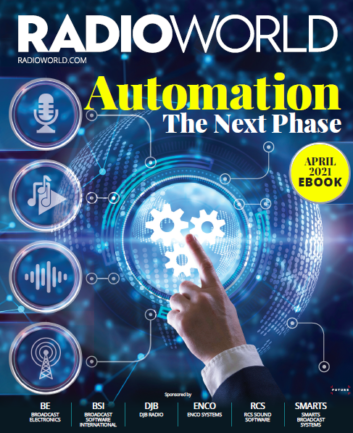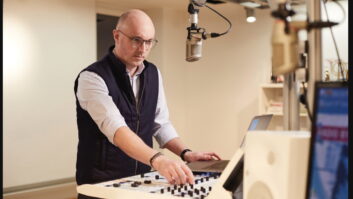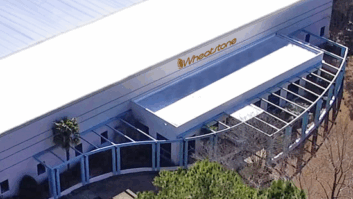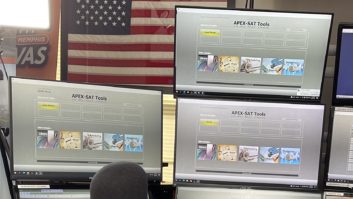
Automation systems, sometimes referred to as playout systems, are a critical asset at many if not most radio stations. These systems can range from small and economical to enterprise-scale.

Regardless of the scope and complexity of the system you use, at some point you’ll be tasked with expanding, upgrading or outright replacing it.
More often than not, station management opts to stay with the same automation supplier versus making a complete change.
Transitioning to a different system typically means extra work and more disruption to everyday station operations, including retraining everyone. It has been said that the best automation system is the one you know.
But does that system give you room to adapt to current technology and workflows?
For the past 15 years, automation systems have done a good job at providing hard drive space, memory, speed, networking, metadata, file management, uptime and GUIs.
The days of having to reboot your hardware every day or compressing audio files to fit on the drive are long gone for most systems. Options we needed to weigh in earlier purchasing are no longer an issue with today’s systems, which are rich in features, reliability and capacity.
So what key questions should you ask instead?
Are you thinking about moving to the cloud?
If you are considering either a full cloud infrastructure or a hybrid approach, make sure your supplier has a dedicated development team devoted to the cloud. Cloud-based playout is no easy task; you’ll do well to purchase from a company with dedicated resources.
Cloud technology for broadcast is still in its early stages. You want to ensure that the company you choose to saddle up with is committed to innovation for the long term.
Be aware that cloud playout will be billed as an ongoing software cost, typically monthly or annually. So your capital expenditure goes down — there is less hardware to purchase — but your operational expenses go up.
Think about how that might affect your profitability, and consider other op-ex costs to reduce due to advantages such as less hardware and technical support on-site. Those considerations could lead to a reduced real-estate footprint, decreased maintenance costs or other synergies.
Whether you move to the cloud now or in the future, ensure that your automation provider does not limit your options down the road.
What is your cybersecurity posture?
More importantly, does your current or proposed automation system fit within it?
Cyber attacks, system hijacks and ransomware are real and present threats and should not be ignored. Sure, you may have firewalls and tight network security inside your plant. But if something sneaks through, taking advantage of a zero-day exploit, you could be in big trouble.
What protection mechanisms does your automation system have? What redundancy in situations like this does it offer? That might be reason enough to buy a system that offers at least some form of hybrid cloud that allows for almost instant service restoral.
Will my system support interoperability?
It is not uncommon lately to find a myriad of technologies in the studio. There are the standard fader consoles, glass (touchscreen) mixers, AoIP networks, video cameras, lighting systems, remote voice tracking, geographically diverse studios, and more.
If your studio doesn’t have some of these things yet, it will someday. Conduct a detailed review of the interoperability of the proposed system. Ask about how easily it interfaces to AoIP protocols, especially the control layer.
The system should be able to handle basic camera control for visual radio. How easily does it manage remote connections to other locations, especially work-from-home situations that are common in the pandemic? We all made it work, but how simple was the workflow?
The bottom line is that you should ensure your next automation purchase can easily integrate into and improve your workflows. You should not have to “work around” the system to make things play nice.
Are they a vendor or a partner?
I think most of us would agree that purchasing an automation system is about as significant as it gets. You can have the best console, transmitter and talent, but everyone suffers without a functional playout system. That includes the audience.
So when choosing, ask yourself if the manufacturer is someone you’d consider as a business partner who is there for you before, during and after the sale and installation.
Like airplanes and consoles, a playout system, once installed, is in operation for many years. This is not something you’ll be swapping out every year.
Take a close look at your proposed partner’s bench strength. How many employees do they have? We all know how important technical support is. How experienced is their support team? What is their track record for development and focus on the product line?
Are they financially sound? You want them to be around for a long time, and you want them to have funding to pursue research and development well into the future. Some companies make a friendly playout system but do not have the funding to develop future technologies or adapt to changing workflows.
Does the company listen to feedback and incorporate suggestions into future releases? How often do they update their software (ask about minor releases and major version updates)? Do they have a presence in the country where you operate?
What’s my game plan?
As in any significant station project, make sure you have a plan from the start.
This means you should have a strong understanding of why you are changing or upgrading your automation system. You may need to revisit this question as you dig into the costs and resources needed to execute the plan. It is not uncommon for a stakeholder to ask, “Tell me again why we are going through all this effort and expense.” If you can’t justify the necessities, you may run into obstacles receiving the final sign-off.
Identify your upgrade and conversion team ahead of time and designate a leader and key decision-makers. Typically, these working groups will include representatives from engineering, programming, operations, finance/management and sales. Each of these departments is affected by the choice of system and feature set, so it is best to include them early in the process.
In summary, don’t approach the purchase as though it is a simple piece of gear.
The author is a veteran engineering executive and owner of Kline Consulting Group LLC






